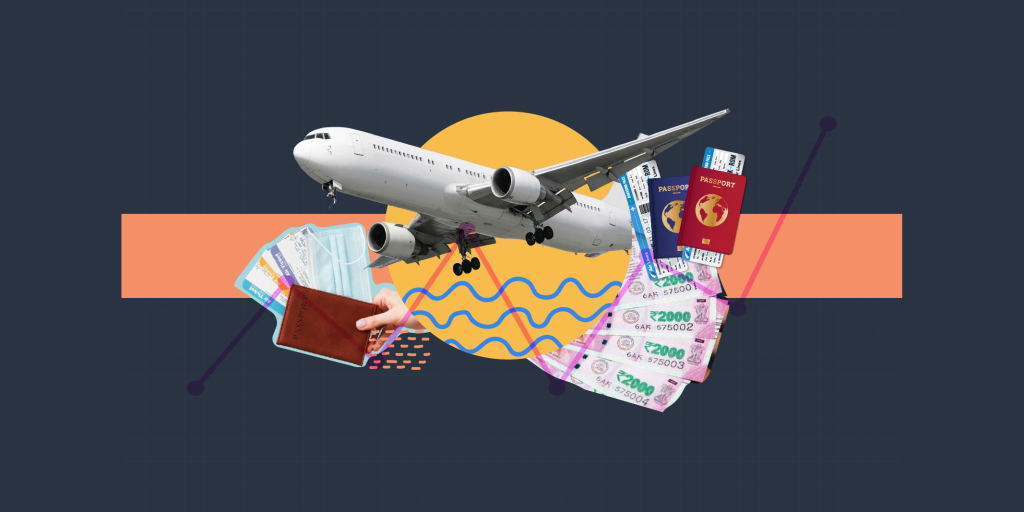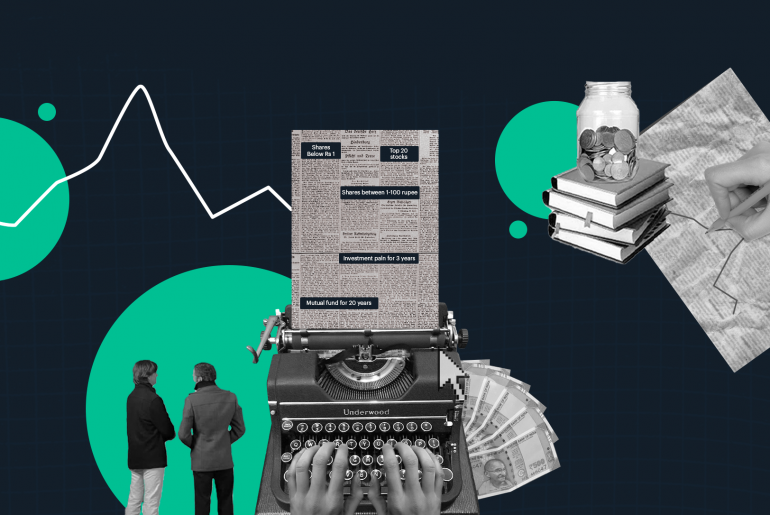Last Updated on May 17, 2023 by Harshit Singh
India’s first commercial air carrier started in 1932 and, a few years later, it was nationalised. Till the early 1990s, there were only two players in the market – Air India and Indian Airlines. However, post the Liberalisation, Privatisation and Globalisation (LPG) reforms in the early 1990s, various players entered the industry, and the composition at present is as under:


Out of the players mentioned above, Indigo (Interglobe Aviation Ltd.) and SpiceJet (SpiceJet Ltd.) are listed on the stock exchange.
Table of Contents
Broad Trends
The industry has promising growth due to the following factors:
- India is currently the 7th largest market in terms of passengers and is expected to climb to the 3rd spot by 2023
- Rising working population and income will boost demand for air travel
- Barriers to entering into the industry are high – substantial capital investment, licensing, etc.
- The closest substitute is railways, though railways are affordably priced than air travel (price differential of INR 3.2 per km on an average), the latter, however, is a faster mode of transport
- Air travel in India is highly under-penetrated and will give existing players considerable room to grow
| Rank | Country | Penetration |
| 32 | UK | 2.28 |
| 35 | USA | 1.87 |
| 45 | Malaysia | 1.44 |
| 61 | Japan | 1.1 |
| 87 | Russia | 0.59 |
| 102 | Brazil | 0.44 |
| 103 | China | 0.44 |
| 149 | India | 0.11 |
Looking at the above, an initial reaction would likely be – why not invest in airline stocks? With Kingfisher shuttered and Jet Airways and Air India in a soup, Indigo and Spicejet have nothing prima facie that can stop them for soaring high in the sky (pun intended).
Financial Analysis
Here’s the catch – a dominant force that sways the pendulum on the other side of the scale is the highly sensitive cost of operating for airlines in India.
Before deep diving, here’s a snapshot of the Revenue and Net Profit (Profit After Tax) for Indigo and Spicejet for the last five years:


In both the companies, though the Revenues are increasing Year-on-Year, the Net Profit is highly volatile.
Operating costs for airlines
To understand the difference in the movements of both, let us first dissect the total costs incurred by airlines.

Major cost components are fuel costs, aircraft rentals and foreign exchange expenses. A discussion on the same is hereunder:
Fuel cost
Indian airlines’ fuel cost as a percentage of total costs is among the highest in the world. Airlines require Aviation Turbine Fuel which is a derivative of crude oil. Here are the price movements of both in recent years.

Just like any other commodity, the laws of demand and supply affect crude oil prices. The OPEC cartel also influences oil prices considerably as they control significant crude oil supply in the world. Now your question would be that crude oil, in turn, affects the prices of petrol, diesel and is a significant raw material for a lot of industries, then why this phenomenon is peculiar to the airlines industry? To answer this question, we will have to look at the changes in airfare in recent years:

We don’t see the airfares increasing because the airlines are engaged in price wars. This means that they do not pass on the increase in costs to their customers, fearing that potential customers will fly with competing airlines.
I know what you are thinking – why not hedge? For the uninitiated hedging means locking the price beforehand, so that irrespective of the market price, you pay the price agreed previously. Majority airlines in India do not hedge because prices fluctuate heavily (if the market price is INR 100 and your locked-in price is INR 75, then, of course, you walk away happily; but if the market price turns out to be INR 50, you are doomed). It seems that the airlines don’t want to let go of the opportunity of this lower market price and hence are willing to go all in.
Foreign exchange expenditure
Here’s a look at the US/INR exchange rate in recent years

With the INR depreciating (weakening) against the dollar, this further adds to the airlines’ woes as 60-70% of their operating costs are dollar-linked (fuel, maintenance, etc.)
Aircraft lease rentals
Airlines pay 15-20% of their total costs for leasing aircraft. These rentals are spiked particularly for airlines that have started leasing fuel-efficient aircraft.
This inherent industry dependency on externalities for managing costs is a major reason why a few wrong strategic moves can lead to airline companies resorting to emergency landings (pun intended) – examples being Air India, Kingfisher, Jet Airways etc.
Impact of Covid-19
Sadly airlines will not be able to fly past Covid-19 that easy and are already reeling under its brunt. Though the sharp dip in crude oil prices would have substantially helped the airlines save fuel cost, the demand destruction will outweigh the benefits. A recent Crisil research report estimates that Indian airlines are looking at INR 1.1 – 1.3 lakh crore revenue loss over the next three financial years (including the current fiscal) due to lower capacity utilisation arising from travel and visa restrictions. The passenger traffic is unlikely to get back to pre-pandemic levels any time soon. Also, airlines are currently facing a double whammy – though the revenues have dipped, significant expenses are fixed, such as aircraft lease rentals, maintenance expenses, employee expense, etc.
To invest, or not to invest
The objective of the above discussion was not to scare you from investing in airline stocks, but being cautious about it. Maybe, you don’t want to miss out on the wave; then you can buy these stocks but also keep a tab on what’s happening – in the airline industry, airline companies and particularly the volatility in crude oil that would impact ATF prices. For all such latest updates, please keep checking our articles on this blog.
If you have these stocks in your portfolio, you got to watch it just like you watch the sugar in your diet – not necessarily harmful, but the quantity consumed (in this case, the number of stocks purchased & their price movements) requires attention.
To sum it up, would like to leave you with Richard Branson’s (founder of Virgin Atlantic) quote, “If you want to be a Millionaire, start with a billion dollars and launch a new airline.”
- Mitigating portfolio risk through diversification - Oct 13, 2020
- Should you invest in aviation stocks? - Jul 17, 2020
- Why do investment decisions sound like rocket science - Jul 9, 2020




